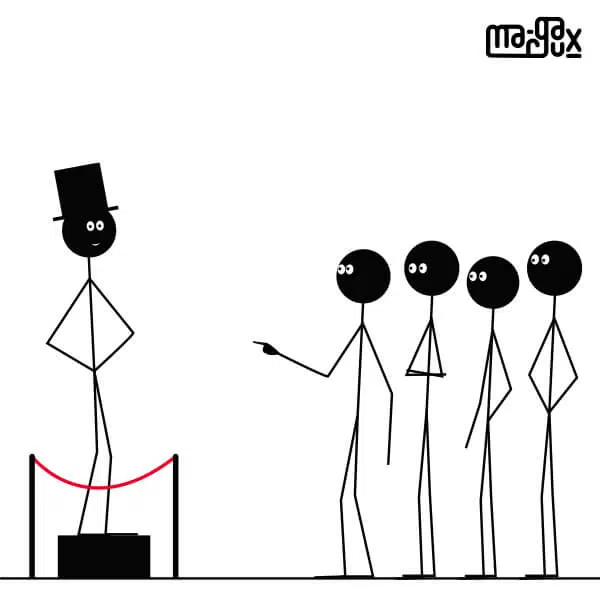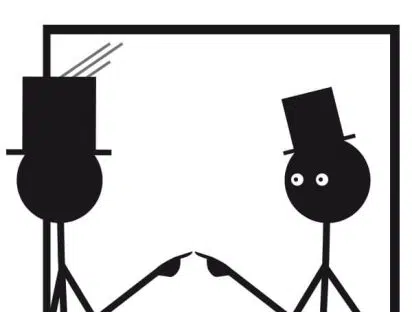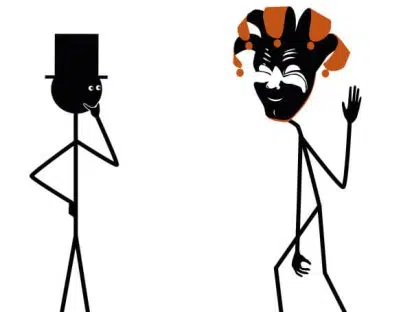
On Friday 22 January 2021, the Geneva Criminal Court handed down its decision in an international corruption case involving the granting of mining rights in an African country. The newspaper Le Temps reported on the trial, which opened on 11 January. One of its articles quoted the prosecution as saying: “This is a textbook case of corruption.” The reference to a textbook case (cas d’école) may seem trivial – it is probably a typical or exemplary case. It is, on the contrary, remarkable and fruitful.
1. The description of Le Temps
There is no need for us to go into the details of the case. We are not interested in its content or its protagonists, only in the formal descriptions and lexicon that appear in five articles that Le Temps published between 11 and 22 January 2021 (1).
In support of the qualification of corruption as a “textbook case,” it contains general judgements on this “dossier qualified as ‘exceptional’,” which led to a “real plunge into the mechanisms of international corruption:” “coveted deposits,” “mining and oil appetites,” “juicy contracts,” “corruption pact,” “corruptive process,” “spreading influence,” “opaque structure,” “success fees,” “tortuous paths,” “highly confidential contracts,” “offshore company,” “sprawling context,” “one of the poorest countries on the planet.”
There are also protagonists, who sometimes receive several descriptions: head of state, wife, mistress, boss, big boss, chief, adviser, diplomat, repentant (“Crown witness”), faithful employee, administrator, bullshitter (“king of lies”), adventurer…
However, the main argument in favour of the textbook case qualification is conceptual:
“In the eyes of the prosecution, there is no doubt: this huge file contains all the evidence necessary to establish corruption. ‘It is a textbook case.’ ‘That’s all we’ll ever find.’”
The statement about “all the necessary evidence” and, above all, the sentence “that’s all we’ll ever find” explain why the term “textbook case” was used. The last sentence means that the textbook case in question includes all the characteristics of the practical implementation of corruption. In other words, an expert asked whether characteristics should be added to or removed from the textbook case described by Le Temps would have to answer in the negative.
2. Definitions
But Le Temps does not define the notion of a textbook case – that was not its purpose. Here are five definitions:
(a) “a theoretical situation studied in a more or less academic way” (2);
(b) “a typical example that makes reference” (3);
(c) “a classic, perfect case/example” (4);
(d) “If you say that something is a textbook case or example, you are emphasizing that it provides a clear example of a type of situation or event” (5);
(e) “In casuistry], new cases are analysed by analogy with earlier cases (remembered in corpora of ‘classical cases’) or by analogy with paradigmatic cases (textbook cases that can be invented for pedagogical purposes)” (6).
The way in which Le Temps describes the supposed corruption textbook case fits with definition (c): “perfection” (“a perfect example”) refers to the idea of completeness, to the fact that the case includes all the characteristics of a theoretical concept or model. Definition (a) brings theory closer to practice, to the particular: the textbook case is a practical illustration (an exemplification) of theory. Definition (e), which is more developed, is close to the latter, but here the textbook case has the value of a paradigm, of a “typical example presenting all the variations of the type” (7). Definitions (b) and (d) are reformulations of this.
Note the reference to “clarity” underlined by definition (d). One of the features of the textbook case is that it is, in relation to the subject matter in question, easy to describe and easily understandable – definition (e), moreover, refers to its pedagogical virtues.
The following text illustrates these properties of clarity and intelligibility. We present it without recalling the problem discussed by the author, the philosopher Vincent Descombes, because, precisely, the reference to a textbook case is enough to give meaning to the subject:
“To account for this indisputable fact, it is therefore appropriate to apply here the classical distinctions applied to the old textbook case discussed since the Greeks: is the boat of Theseus, which is constantly being repaired so that not a single plank of the initial construction remains, the same at the beginning and at the end or not? Solution: the equivocal formula ‘the same thing’ is discarded and the answer is that it is the same boat (defined as a construction or structure), but that it is not the same collection of planks.” (8)
Note the use of the adjective “old” (“old textbook case”), which suggests that the case is invoked, in the manner of a convention, to discuss a theoretical issue.
3. The completeness of the textbook case
The completeness of the textbook case does not only come from the fact that it has all the characteristics of a theoretical concept or model: it also applies to perception. If a case has this status, it is because it jumps out at the spectator – it is self-evident. And when one invents a textbook case, in the terms of definition (e), one ensures that what it represents is indisputable.
Here is an example which, like the case described by Le Temps, deals with corruption:
“Let’s take a textbook case, that of public works. The contractor agrees with a mayor to organise a fictitious call for tenders for the construction of a community centre. The day before the tender is awarded, a few posters are put up to comply with the formal rules of publication (obviously no competitor has time to respond). On the day in question, the company and a few friendly companies (because several bids are needed) submit their proposal and the contract is awarded to them. All that is then required is to pay a small sum of money, in the form of a contract with a firm of consultants close to the mayor or his or her party.” (9)
This description has a perceptive evidence. It conveys a logical certainty of the following kind: “If I encounter a situation with these characteristics, then I can describe it as a situation of corruption.”
The expression “logical certainty” may be too strong. Albert Jonsen and Stephen Toulmin prefer to refer to the use of paradigmatic cases in moral reasoning as “initial presumptions that carry conclusive weight” (10). Conclusive weight is not logical certainty. But this distinction alone confirms the observation we made at the beginning of this article: the reference to a textbook case, proposed by Le Temps about a case of corruption, is remarkable and fruitful.
Alain Anquetil
(1) These are the following articles: “A Genève, le procès des affaires guinéennes de Beny Steinmetz s’annonce houleux,” 11 January 2021; “La défense de Beny Steinmetz échoue à faire imploser le procès de Genève,” 11 January 2021; “Beny Steinmetz, l’insaisissable magnat des mines,” 12 January 2021; “L’affaire Steinmetz, ‘c’est un cas d’école en matière de corruption’,” 14 January 2021; and “Le jugement qui condamne Beny Steinmetz et ses acolytes,” 22 January 2021.
(2) A. Rey (ed.), Dictionnaire historique de la langue française, Paris, Le Robert, 2010.
(3) Source: Dictionnaire Larousse.
(4) Source: Merriam-Webster Dictionary.
(5) Source: Collins Dictionary.
(6) F. Zimmermann, “La casuistique dans la bioéthique américaine,” in Jean-Claude Passeron et Jacques Revel (eds.), Penser par cas, Paris, Éditions de l’École des hautes études en sciences sociales, 2005.
(7) Source: CNRTL.
(8) V. Descombes, “Les individus collectifs,” Revue du MAUSS, 18(2), 2001, pp. 305-337. Another striking example:
“The textbook case comes from Occam: if I paint the wall of my house white, is it to be said that he acquires a new property, the one that consists in resembling all the existing white walls and, conversely, that I have changed all the existing white walls by the same token, since they are now resembling that of my house?”
(F. Callegaro, “Qu’y a-t-il de relationnel dans le social ? Vincent Descombes et les leçons du don,” Revue du MAUSS, 47(1), 2016, pp. 129-164.)
(9) P. Cabin, “Les rouages de la corruption,” Sciences Humaines, 109, October 2000.
(10) A. R. Jonsen & S. Toulmin, The abuse of casuistry: A history of moral reasoning, Berkeley, University of California Press, 1988.




